It’s that time of year again – the Annual Sports Technology Buyers Guide. One of these years I might even publish it more than once per year. Still, this is when I try and cover a wide range of sport gadget areas. My goal here being to give my specific recommendations – exactly the same recommendations I’d give to my own friends and family. This post isn’t here to list every option on the market in an effort to make every manufacturer happy. Of course, as more and more companies get into the market, there ends up being more and more possible scenarios as the products expand in functionality.
As with last year, for the most part the stronger brands have gotten stronger, and the brands that were struggling have fallen further by the wayside. There are exceptions to that though, for example we’ve seen smaller brands like COROS really start to cement their place in the market in certain price buckets. Still, there’s a reality when one company in the industry (Garmin) sells many millions more sport-focused devices than everyone but Apple, that there’s just going to be more categories that are in their favor. This was the first year they’ve overtaken Fitbit and Samsung in smartwatch sales. But beyond that, no other company is releasing 10-20 fitness/outdoor/sports devices per year. And while sometimes they whiff, but most times, they don’t.
In any case, one could try and write recommendations for every possible edge case, but realistically I think there’s probably already too many categories below as it is. Plus, that’s what the comments section is for. I try as best as possible to answer all those quirky edge-case questions.
Oh – wait, if you’re new around here note that I don’t take any money/sponsorships/whatever from any of the companies in this post. Or from any company I review for that matter. So if I like a device, it’s because it’s a legit good device I want to use. With that, let’s dive into it!
GPS Smartwatches:
While last year (2019) saw an explosion of new watches, this year saw a bit more of a measured pace. Some of that likely due to COVID-19, but most of it simply due to the tick-tock nature that some manufacturers take insofar as new watch release cycles. The industry has slowly been shifting to match Apple’s yearly release cycle for Apple Watch, it’s simply not likely to be the case for every product line out there (just like it isn’t for Apple and some of their other product lines, such as computers, Apple TV, etc…).
In any case, this category hasn’t changed a ton, though there have been some minor updates within it. And again, keep in mind that there are still some good watches that don’t make the cut here. In many cases there’s nothing wrong with them. It’s just not what I’m likely to recommend to friends and family, which is how I approach this.
Note, I specifically break-out the triathlon section down below in the next header.
Casual Athlete: Apple Watch (variants noted below), Fitbit Versa 3, Polar Ignite, or Garmin Vivoactive 3
Here, let me break down who should get each one. It’s probably easier that way:
Apple Watch: If you’re looking for a watch that’ll track your workouts but won’t obsess over data – while still giving you the best all around smartwatch experience, there’s no question here – it’s the Apple Watch. The tricky part is deciding which one. Series 3 is a steal these days at $169 (remember, it has GPS as well as offline music support). Meanwhile, Series 6 is the newest with the fully always-on display, SpO2, ECG, and a pile of nuanced changes you won’t notice. Apple also rolled out the new Apple Watch SE this year in an attempt to split the difference, coming in around $279 instead of the $399 of the full Apple Watch Series 6. The software is virtually identical on all three watches, which are only separated by display/ECG/SpO2/storage/speed differences – though, the HR sensor isn’t as good as on the Series 6 (and my testing doesn’t quite find the GPS as good as the Series 6 either).
Fitbit Versa 3: The Versa 3 is Fitbit’s latest mid-range smartwatch, and includes GPS and offline music support. While I haven’t found the optical HR sensor all that great for me, I’m also aware that many people aren’t quite as picky as me there, especially if you’re focused on having a Fitbit, I think this is one of the spots to be in. Notably, I’d struggle to recommend the higher-end Fitbit Sense, as I just don’t think Fitbit does a good enough job of making sense of all the newfound data they’re collecting. There’s just not enough in the way of usable recommendations there yet. Maybe down the road, but not today. Thus, the Versa 3 is a good split in the middle – plus – you get far better battery life than an Apple Watch (and, it’s compatible with Android).
Garmin Vivoactive 3 or Vivoactive 4: I know…I know, you’re saying ‘Wait, why the VA3 and not the VA4?’. Simple – price to features. The Vivoactive 3 floats between $110 and $130 these days, and is an incredible value (add $30 for the Vivoactive 3 Music if you want). The Vivoactive 4, while very good, floats at $249. But practically speaking, for the vast majority of people, there’s just not a lot of extra ‘stuff’ on the Vivoactive 4 over the VA3 that makes me want to spend double. Sure, if you want to spend the extra money for the Vivoactive 4, the additional side button is nice. Same goes for the Garmin Venu, which is merely a Vivoactive 4 with a prettier screen. But if you don’t care about that, save the cash.
Polar Ignite: While I think the Ignite is still very slightly overpriced, I think what the company is doing around dynamically prescribing workouts and recovery/strength/flexibility workouts is super cool. Plus, the watch integrates well into the larger Polar ecosystem, so it doesn’t feel like a budget watch – but like an athletes’ watch. The Polar Ignite has less in the way of smartwatch features (for example, no music), but makes up for it in all the sports/fitness features like structured workouts, day to day guidance on what you should do next to stay fit, and how to add secondary workouts like stretching or core workouts to round it all out. I think it’s one of the best products Polar has made in years.
Data-Driven Athlete/Runner: Garmin Forerunner 245/245 Music or COROS Pace 2:
Garmin FR245/FR245 Music: Garmin’s most current mid-range Forerunner now encompasses almost all of the higher end stats found on what was last year’s highest-end watches. Of course, as always, there are new higher-end stats in the land – which you’ll find on the FR745/945/Fenix 6 (I cover those later). But for most people, you’ll find you get everything you could possibly need for running or racing with a Forerunner 245 or 245 Music. PacePro being one of the big additions, which allows you to get dynamic pacing information based on grade and splits. You’ll also get the newer safety/tracking assistance features as well as more data fields/page layouts than years prior. More recently it also got Garmin’s new Track Running mode, which snaps your workouts to the track to get flawless GPS tracks and distances. While the previous FR235 was solidly middle of the pack from a features standpoint, so much has been packed into the FR245 now that it feels more premium than the price point suggests.
COROS Pace 2: The new COROS Pace 2 is a full multisport watch that can do swim/bike/run/triathlon, but even more than that – it does running very well. It’s got a built-in track running mode, but also has native running power inside the watch itself – so no need for secondary sensors or the like. This can be used for pacing instead of native running pace. The watch recently got increased structured workout support from TrainingPeaks, as well as numerous watersport modes for stand-up paddleboarding and more. Oh…right, one last thing: It’s only $199. This watch easily competes with far more expensive watches from Garmin, Polar, and Suunto (and more recently the Wahoo RIVAL watch). About the only thing the COROS watch lacks is a bit of polish in the app, but on the watch itself the data game is strong.
Best in Class Sports/Fitness Watch: Fenix 6 Pro Series
There’s still really no competition here. If you’re looking for the most feature-packed higher-end watch, it’s going to be the Garmin Fenix 6 Pro Series. Ok, I guess technically it’s the MARQ Athlete, but I’d prefer to spend that near-$2,000 elsewhere.
But the Fenix 6 – that I like. I’d personally recommend the Fenix 6 Pro variant, since it includes maps and music. While Garmin has Solar this year in all the variants, all my testing has shown that in the Fenix 6 implementations, it’s minimal in usefulness at best (whereas on the Garmin Instinct Solar it’s actually meaningful). But ultimately, you’re not buying this watch for its tiny solar panel – you’re buying a Fenix 6 because it does everything you could ever imagine a sports or outdoor watch doing, and generally speaking it does it pretty darn well. Garmin has clearly focused more on fixing bugs in the last year than years past, and it’s showing.
Again – if you’re looking for the best fitness watch money can buy that isn’t MARQ, then go Fenix 6 Pro Series. If you want something a bit swankier, MARQ is great too. And if you want to save a few bucks you can pick up the plastic Fenix 6…called the Garmin Forerunner 945. It’s almost identical in features. Almost.
Music Wearables Services:
More and more music is becoming baseline for wearables. I cover my specific recommendations throughout this piece, however I do briefly want to touch on music services, as that might drive your decision matrix. Most notably, apps that cache your music for playback when your phone isn’t near. Here’s the current list:
Apple Watch: Apple Music (Note: While there are apps like Spotify for the Apple Watch, they don’t cache music yet, though it can now stream it via cellular/WiFi)
Fitbit: Pandora, Deezer (the Spotify app on Fitbit doesn’t download/cache your music)
Garmin: Amazon Music, Spotify, iHeartRadio, Deezer
Samsung: Spotify, Tidal
WearOS: Spotify, YouTube Music
In any case, here’s the complete list of recommended GPS devices:
| Product | Amazon | Competitive Cyclist | |
|---|---|---|---|
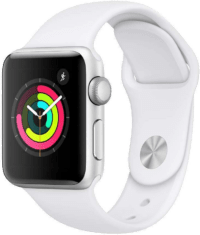 | Apple Watch Series 3 $169-$179 | Amazon | |
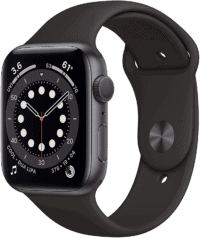 | Apple Watch Series 6 $399/$499 (cellular) | Amazon | |
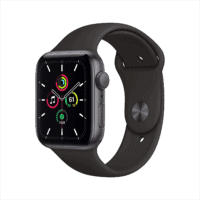 | Apple Watch Series SE $279 | Amazon | |
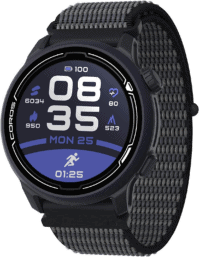 | COROS Pace 2 $199 | Amazon | |
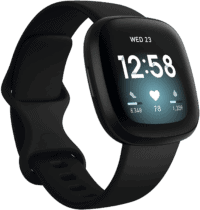 | Fitbit Versa 3 $229 | Amazon | |
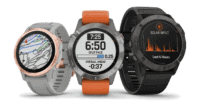 | Garmin Fenix 6 Series $549-$1,149 | Amazon | Competitive Cyclist |
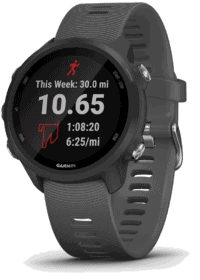 | Garmin Forerunner 245 $299/$349 | Amazon | Competitive Cyclist |
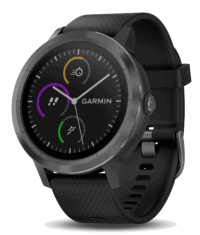 | Garmin Vivoactive 3 $129 | Amazon | |
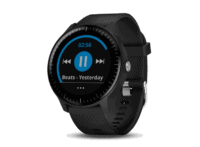 | Garmin Vivoactive 3 Music $169 | Amazon | |
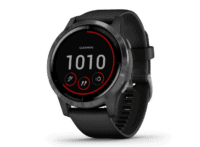 | Garmin Vivoactive 4 $299 | Amazon | Competitive Cyclist |
 | Polar Ignite GPS $229 | Amazon |
The Why Not: So why not the Polar Grit X? I actually really like that watch, but I’m frankly just not sure where it fits into the above, except perhaps in a hiking category. I really like the look of it (primarily the black variant), and Polar’s features are good there, though, I worry about it seemingly being feature-abandoned with the Polar Vantage V2 and them deciding not to port anything back to a 6-month-old watch. As for the Suunto 7? As you’ll hear about in my 2020 Watch Year in Review post/video with DesFit tomorrow, I would have slated this as the Watch of The Year prior to launch – but ultimately it fell flat in execution. It’s gained some ground back, but still needs some more tweaks (notably, HR sensor strap support – though ideally other sport sensor support, but also I continue to find the offline mapping finicky). I can deal with the poor battery life, but not the lack of sensors. And the Instinct? Look, it’s great. Even better on sale right now at $169 – seriously, that super great. And the same could be said for the Forerunner 45 @ $149 now. And on and on. My goal here though isn’t to try and capture every possible watch. There’s a LOT of good running watches out there – and a lot of good watches become great watches over Black Friday sales.
Triathlon-Specific Watches:
This category is for what the industry calls ‘multisport’ watches, but that typically just translates to triathlon watches. They track your time/distance/etc… within the three sports – swim/bike/run. From a non-triathlon multisport aspect, these watches are often used by everyone from windsurfers to skaters, mostly because of their versatility and flexibility in configuration and display customization.
Note that the minimum requirement to be a multisport watch is specifically a multisport mode, which allows you to record multiple sports (e.g. swim/bike/run) in a single activity/file. If you have to stop the workout to change modes (like on a Fitbit), that’s not a multisport watch. That’s just a watch that happens to have multiple sports (at least by commonly accepted industry definitions).
Overall Best in Class: Garmin Forerunner 945
I know, I know, you think the Fenix 6 should be here. But I don’t. Mainly because a heck of a lot of triathletes want something that has a quick-release kit, so they can move it to their handlebars. But if that doesn’t bother you, then go forth – you can absolutely scratch out ‘Forerunner 945’ and replace it with Fenix 6 above. They’ve got virtually identical everything, from software to internal hardware (with Fenix 6 having a handful more features).
Still, as for the FR945 – both myself and y’all seem pretty darn happy with it since it came out last year – and nobody’s screaming yet. It’s got more metrics than you’ll frankly ever need, but I have found the Training Load Focus/Balance bits useful for remembering when to mix up the intensities a bit. And if I want to do offline music, I can do that too – it can connect to Bluetooth Smart headphones and cache my Spotify playlists. Also, if you can’t make the FR945 fit budget-wise, just grab the FR745 instead – it’s what I’ve been using the last 3 months without issue. It’s basically (roughly) a FR945 without maps, saving you $100.
Best Budget Option: Polar Vantage M or COROS Pace 2
In some ways, it’s really a disservice to assume that because these are budget options that they’re somehow bad. After all, the COROS Pace 2 is an incredibly powerful triathlon watch – easily way more feature-rich than the $379 Wahoo RIVAL. The same goes for the Polar Vantage M, which packs in tons of features, especially around structured training and training load. Plus it got even more features late last year as part of updates from the Polar Ignite. Both are great options if you’re getting into triathlon and aren’t sure what to get.
| Product | Amazon | Competitive Cyclist | |
|---|---|---|---|
 | COROS Pace 2 | Amazon | |
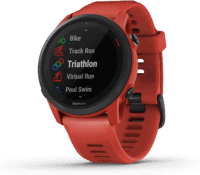 | Garmin Forerunner 745 | Amazon | |
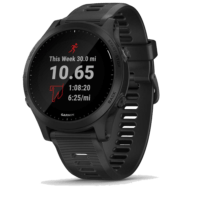 | Garmin Forerunner 945 | Amazon | Competitive Cyclist |
 | Polar Vantage M | Amazon |
Note: For *triathlon* I do NOT recommend the Garmin Vivoactive series or Garmin Instinct:
I want to be really clear on this. The reason I don’t recommend these watches is twofold, but mainly centers on the fact that they don’t support a multisport mode. Yes, it supports running, and cycling, and indoor swimming. But you can’t tie all those together in a race or training. Further, while the Garmin Instinct series does support openwater swimming, it doesn’t support multisport mode.
This is pretty similar for some of the other running watches like the Polar M400/M430/M600 or Garmin FR45/230/235/245/620/630/645. Yes, they all support running and cycling, but none support multisport modes (nor openwater swimming). If you cycle sparingly and don’t swim, then they’re all still viable options.
Also, why not: Before folks ask, why not Suunto 5 or the Wahoo RIVAL? Honestly – I think Suunto has lost the plot here with their app/platform ecosystem. At a time when Polar and COROS keeps pushing ahead on not just their features via firmware, but also their platform behind it all – Suunto keeps removing things. Which is too bad. Last year they owned the budget category here. As for Wahoo’s just released-last-week RIVAL, it’s simply not ready yet for prime time. It’s missing far too many core features/functionality, especially compared to the COROS Pace 2 (at about half its price), or the well worn Polar Vantage M. Also, since someone might ask – given Wahoo doesn’t have a web/analytics platform and Suunto seems bent on getting rid of theirs, then wouldn’t we just ignore the Suunto’s platform stuff for the Suunto 5? Sure, I suppose. I like the watch itself, just not the lack of clarity on where the company is going.
Cycling Tech:
Before we go too much further, if you’re looking for indoor trainers or trainer apps, then check out my two dedicated posts on that. My trainer post is pretty darn new – only a few weeks old. And my trainer app guide is from this past spring when everyone was rushing indoors.
In any case, we’ll start with the tech that goes on your handlebars.
All Around Cycling GPS: Garmin Edge 530 & Wahoo BOLT
If we were to play purely a features game, the Edge 530 would win this category no problem (or the Edge 830 if you want to pay $100 more). But it’s not as simple as that. For what the Wahoo BOLT lacks in features it does make up for in simplicity and ease of use. Mostly.
Starting with the Edge 530 – it got a boatload of new features upon launch. ClimbPro being one of the biggest, which automatically shows each segment of your climbs as you go through them on a course. It’s super cool for hilly/mountainous routes. Atop that, for mountain bikers there’s a massive swath of new features from trail routing to jump metrics. And of course – the biggie for the Edge 530 was that it now includes detailed routable maps for your region. That’s the core difference to the Wahoo BOLT, which while it has underlying maps – they can’t route atop them on the fly without a pre-programmed route.
Meanwhile, the Wahoo BOLT does support navigation as long as the routes are sent to it from your phone or a 3rd party service. And it supports all the sensors you’re likely to use, including Garmin’s Varia Radar these days. Atop that – one of the biggest points for the Wahoo is the phone integration, which is super smooth and ‘just works’. There’s no fiddling with trying to get or keep the pairing, nor is it complicated to find features. Sure, it has less features (a lot less), but, it’s also just simpler for many folks to pick up and go.
Either way – you won’t go wrong with either unit. You’ll largely find the Edge 530 on my handlebars these days, with the odd Edge 830 showing up here and there. The main difference between the two being the touchscreen (which, as yesterday can once again attest to – works perfectly fine in the pouring rain).
Best Mapping GPS: Edge 1030 or 1030 Plus
When it comes to depth of mapping features, there’s really no competition here – the Edge 1030/1030 Plus wins every time. Note that Garmin released the Edge 1030 Plus this past summer, which includes a handful of new features, but many of those new features have been recently added to the original Edge 1030 this past month. So if you find a good deal on the Edge 1030, I’d grab that.
If you want to do it from your handlebars, there’s a pretty darn strong chance the Edge 1030 can do it. It’s a bit bigger than I probably need, it does things well and there’s no touchscreen issues (or clumsiness like the Edge 820 touchscreen). I don’t really know of anyone that doesn’t love their Edge 1030. Even the comments mirror that on not just my review, but all reviews. People are happy there, minus a few folks with a blue halo display issue – but support seems to take care of them pretty quickly, and Garmin says they’ve long-since changed the manufacturing cause of that.
The main thing that really differentiates the Edge 1030 from something like the Wahoo ROAM is the onboard database of not just points of interest, but also addresses. It’s the ability to do literally everything from that unit – no phone required.
Why not list: While both the Wahoo ROAM and Karoo 2 have mapping (as does the Bryton Rider 750), it’s really in a different league to the Edge 1030/1030 Plus. As for the Sigma ROX 12, the company has basically pulled out of all markets that aren’t named or bordering Germany, so…yeah. On the Karoo 2, I could see it making a run for this list next year, depending on where features end up. It’s just starting to ship two weeks ago, and you’ll see my full review in a couple more weeks. I also have the Bryton Rider 750 and have been putting miles on that, but feels more like a beta unit than a final shipping device.
Best Budget GPS Unit: Lezyne Mega-C/Mega-XL, or Stages Dash L10
We’ve got the Lezyne Mega-X at $199. Lezyne has like 38 different models between $100 and $200, I tried to explain it all here a few years ago, and then they added more. They’ve all got minor nuances. These units can do basic mapping, and pull in routes from sources like Komoot, as well as legit turn by turn navigation in terms of things like saying ‘Left on Maple Street’. The Lezyne units support both ANT+ & Bluetooth Smart.
The Stages Dash L10 gets included this year, especially if you’re a power meter user. The depth of power meter metrics is super deep there, and the battery life too. Plus, it’s sub-$150 (well, just $75 starting tomorrow on sale). Seriously, it’s got the data features of a $300 unit. However, it lacks a lot of the other more common features in fancier cycling GPS units like Strava Live Segments. But if textual data’s your thing (or if you wanted a better SRM-style bike computer, this is where it’s at).
So what about the Edge 130? It depends, it’s floating down around $170 on various sales/deals right – which is a so-so deal for a basic unit with more polish than the Lezyne (but less features). But it lacks in areas like Garmin Connect IQ support compared to higher-end Garmin units. Of course, you’re paying for the rest of the Garmin ecosystem. Also, note that the Edge 130 wasn’t designed to be a replacement for the Edge 500 (which some folks seem to think it is). If you look at it like a budget GPS first, then it’s got fantastic features. But if you approach it as a smaller Edge 520/530, you’ll be disappointed.
Best Safety Sensors: Cycliq Fly6 CE & Garmin Varia RTL-515 Radar
We’ve seen radar usage increase among cyclists as well as bike computer makers, supporting the Varia Radar (the RTL-515 is the current version that combines bike lights + radar, the RVR315 is just the radar). Over the course of the year we saw Wahoo add support to their product lineup for it, then we saw Hammerhead add support, followed then by Stages adding support. There’s good reason: It’s an awesome little device. I’ve yet (still!!!) to find someone who bought one that is unhappy with it.
Next, we’ve got the Cycliq cams. If you’re not familiar, this isn’t an action cam per se, but it’s the closest category I’ve got. It combines a rear light (which you’d want anyway) with a camera. Basically, this is a safety cam. And not in the sense that it’s going to save your ass, but rather, it’s like an insurance policy for later. I have it on my bikes while riding around the vast majority of the time and it’s just silly easy to use.
Now, this isn’t really a replacement for a GoPro or the like, it doesn’t have anywhere near that level of quality. Rather – it’s just so in the event something bad happens to you – you can prove it wasn’t your fault, or even better – catch the person if they left you at the scene. Also, I haven’t yet tried their slightly refreshed version this past fall – but do like their previous CE version.
Swimming Tech:
This category remains unchanged from last year, save swapping out the Polar Vantage M for the COROS Pace 2 – simply because it’s a budget category and the COROS Pace 2 is a bit cheaper.
Best All Around Swimming Watch: Garmin Swim 2
In a category that actually has no formal competitors, I guess it was bound to win. Like showing up on race day and being the only one in your age group. But in actuality, it really is the best swim watch out there – even taking into account all of the multisport watches that mostly do swimming just fine. The reason it’s the best is rather simple: It’s got more features, and does all of those features better. There’s a pile of new indoor features, especially around automatic rest tracking.
But I think the real star of the show is the openwater swim accuracy. Previously the Apple Watch won that category, but with the Swim 2, Garmin managed to wrestle that crown back. It was borderline scary how accurate it was. Check out my full review for all those side by side track comparisons.
Budget Swim Watch: COROS Pace 2 or Apple Watch Series 3.
If you’re looking for both a pool and openwater swim watch on a budget and don’t care about as much of the fancier smartwatch features, check out the COROS Pace 2. It’s simply a full-featured triathlon watch that also happens to do swimming pretty well.
Similarly, the Apple Watch Series 3 spits out fantastically accurate openwater swim tracks, as well as really strong indoor swimming. Sure, it doesn’t have the most full-featured swimming functionality – but if you’re mostly looking to just track laps and splits, it’ll more than do the trick.
Honorable Mention: FORM Swimming Goggles
It’s hard to categorize the FORM Swimming goggles. It’s not a watch obviously, but this year it did get openwater swim support if you have a Garmin or Apple Watch. But even if you don’t have one of those, if you’re primarily pool bound, it’s incredibly good at tracking your swim without ever requiring a glance at your wrist or a touch of the display. It just does it all automatically while displaying the stats in real-time on the inside of the goggle, heads-up display like. Sure, it’s a bit pricey at $199 (but will be on sale for Black Friday), and how well it holds up long-term remains to be seen. But the company rolled out integration with the Polar OH1 heart rate sensor, which gets your HR data into the goggles/data files too. Note, do be sure that if you’re specifically getting FORM for openwater use that you pick a Garmin or Apple Watch that’s compatible, as not all Garmin watches are compatible (such as the Garmin Swim 2, because it doesn’t have Connect IQ app support).
| Product | Amazon | |
|---|---|---|
 | Apple Watch Series 3 | Amazon |
 | COROS Pace 2 | Amazon |
 | FORM Swim 1 Goggles (with heads-up display) | Amazon |
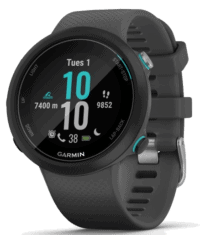 | Garmin Swim 2 | Amazon |
Sensor Connectivity:
If you’re getting any of the units listed above, you may be in the market for accessories. Obviously, some bundles include accessories, while others do not. Here’s what I recommend based on having entire buckets worth of accessories to test with.
In general, almost nothing has changed here in that I strongly favor dual ANT+/Bluetooth Smart sensors over single-channel versions (e.g. ANT+ or Bluetooth Smart only). These sensors are available in all categories now. The reason for going dual is simple: It allows you the flexibility to choose whichever device you want and know it’ll work with it. Be it using it with apps like Zwift or Strava on Bluetooth Smart, or your bike computers or watches that just do ANT+. Or both at once!
Heart Rate Sensor (Chest strap): Wahoo TICKR, Polar H9, Garmin HRM-DUAL, 4iiii Viiiiva
Looking for a non-optical HR strap? I almost exclusively use the Garmin HRM-DUAL and the Wahoo TICKR series. I personally give a slight edge to the Garmin HRM-DUAL because it’s not just dual ANT+/Bluetooth Smart, but actually dual-Bluetooth Smart. While the scenarios are somewhat limited that you’d need to concurrently connect two Bluetooth Smart devices (such as Zwift at the same time as a Polar or Suunto watch), I appreciate the flexibility. Also, I think the strap is more comfortable.
Yet at the same time, you’ll often find me rockin’ the Wahoo TICKR (often the X, but I rarely use the X-specific features). Personally, if you’re going to go for a TICKR and don’t have a specific need for the TICKR X features, then just pick up the regular TICKR and save a bunch of money.
I have a Polar H9 permanently attached to our Peloton bike (now at home), merely to always have something there. It too works great here with dual ANT+/Bluetooth Smart.
Finally, there’s the 4iiii Viiiiva. It’s always the forgotten one, but it’s a super function-rich strap. It has a boatload of extra features around ANT+ to BLE conversion and offline storage. Plus all the regular dual ANT+/Bluetooth Smart HR bits.
Oh, one note for Garmin users:
If you’re looking for running dynamics with your Garmin device, that’ll require an HRM-TRI, HRM-RUN, HRM-PRO, or RD-POD – or, more recently the Wahoo TICKR X 2020 can do that too. The HRM-PRO is the only one of that group from Garmin that’s dual ANT+/Bluetooth Smart, and despite being pricey, it’s what I’d recommend if you’re a Garmin user that wants Garmin Running Dynamics. While the TICKR X does transmit the Running Dynamics standard, just be aware that it lacks a few fields that the Garmin straps do.
Similarly, if you’re planning to be a Wahoo RIVAL user, I’d veer more towards the Wahoo TICKR X than the Garmin straps, since the TICKR X transmits additional Running Dynamics data that the RIVAL doesn’t yet see from the Garmin straps.
Heart Rate Sensor (Optical): Polar OH1+
If I’m using a standalone optical HR sensor, it’s almost undoubtedly the Polar OH1 Plus. After adding ANT+ to it via firmware update last year, it’s quickly climbed into my gear bag. You’ll find it on almost all my runs. Not only does it broadcast dual ANT+/Bluetooth Smart, but a simple double-tap will record the workout to memory and then sync easily into Polar’s Flow app/platform.
While in years past I’ve recommended the dual ANT+ Scosche Rhythm/Rhythm 24, the app experience just isn’t what Polar’s is. Little things like having only a handful of hours of onboard storage for that is tough – whereas I can record boatloads of workouts to the Polar OH1+ and it happily syncs them all down the road. Plus, you get the entire Polar training analysis ecosystem along with it.
As for the just announced Mio Pod, in my testing at this point I’m seeing good accuracy results. And the app shows promise – but has some gaps that’ll keep it off this list for now. But I could easily see a case where early next year it mind find a spot after some app updates.
Cadence-Only: Wahoo RPMv2 or Garmin Cadence V2
I’ll use either unit, when I use one at all. Both transmit dual ANT+/Bluetooth Smart cadence signals, however the Garmin also transmits a second pairable cadence signal. For cyclists using a watch that’s Bluetooth Smart only (like Polar or Suunto), this would allow you to concurrently pair it to your watch for tracking your workout there, as well as pairing it to your smart trainer app like Zwift.
Note that technically I find the Garmin ANT+ cadence-only attachment system slightly better than Wahoo’s, as it doesn’t require zip ties and instead uses an industrial-strength rubber band. But that’s probably not a big deal for most people.
Speed-Only: Wahoo SPEED or Garmin Speed V2
While I rarely use a speed sensor on my regular road bike, I do use one on my commuter and cargo bikes – simply to track mileage. The Garmin V2 sensor will act like a normal dual ANT+/Bluetooth Smart speed sensor, but it’ll also quietly download a copy of every ride to your Garmin Connect account (and then onwards to connected apps like Strava).
If you don’t care about that, then realistically it won’t matter which sensor you use. Like the cadence sensor, the Garmin does have dual-Bluetooth Smart as well as being dual ANT+/BLE, but for an outdoor unit that’s frankly less important. Again – either the Wahoo or Garmin one will work just fine – both are dual ANT+/Bluetooth Smart.
Speed/Cadence (Combo): Wahoo Blue SC
If for some reason you really want a magnet-based sensor, then the Wahoo Blue SC is what you want. It includes dual ANT+ & Bluetooth Smart. Bontrager also has a dual option out these days too, but I haven’t tried it yet. Most of these are made in the same factory and just rebranded.
| Product | Amazon | Competitive Cyclist | |
|---|---|---|---|
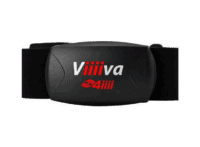 | 4iiii Viiiiva ANT+ to Bluetooth Smart HR Strap & Bridge | Amazon | |
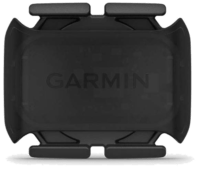 | Garmin Cadence Sensor Gen2 (Dual ANT+/Bluetooth) | Amazon | Competitive Cyclist |
 | Garmin HRM-DUAL | Amazon | |
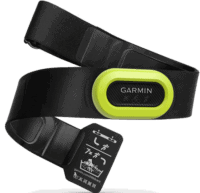 | Garmin HRM-PRO | Amazon | Competitive Cyclist |
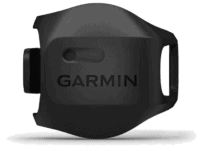 | Garmin Speed Sensor Gen2 (Dual ANT+/Bluetooth) | Amazon | Competitive Cyclist |
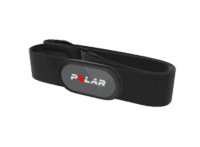 | Polar H9 | Amazon | |
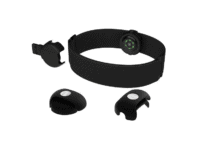 | Polar OH1 Plus | Amazon | |
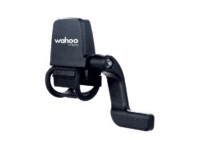 | Wahoo Blue SCv2 - Bluetooth Smart/ANT+ Speed/Cadence Sensor | Amazon | |
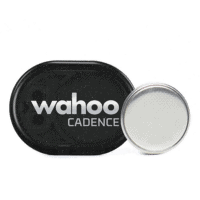 | Wahoo RPM (Bluetooth Smart/ANT+ Cadence Sensor) | Amazon | Competitive Cyclist |
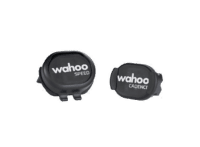 | Wahoo RPM+SPEED Bundle (Dual ANT+/BLE) | Amazon | Competitive Cyclist |
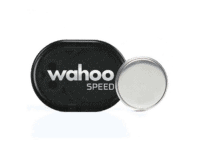 | Wahoo SPEED ANT+/BLE Sensor | Amazon | Competitive Cyclist |
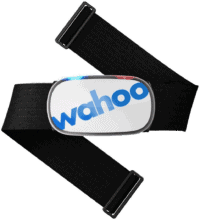 | Wahoo TICKR (2020 Edition) | Amazon | Competitive Cyclist |
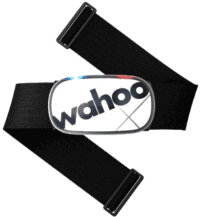 | Wahoo TICKR X (2020 Edition) | Amazon | Competitive Cyclist |
The Why Not List: Some people will ask about Whoop. I’d just read my full Whoop In-Depth Review to understand why I wouldn’t recommend it. And eventually, I’ll get around to creating my Whoop In-Depth Review video for YouTube, an then take this darn thing off my wrist. Thus, I can say that 6 months after my written review, my opinions have not changed. In fact, with 6 months and more than 200 workouts worth of data, they’re stronger than ever.
Action Cams & Drones:
For the most part, the action cam industry is consolidating. But this year we did see DJI get into the mix with a very solid first attempt at things with the DJI OSMO Action. Super strong first attempt. Meanwhile, we haven’t really seen Garmin touch their wares in a few years – so I’ve gotta believe they’re stepping away from it at this point. There are of course a bunch of random budget cams out there on Amazon. Generally speaking, you get what you pay for there.
Best All Around Action Cam: GoPro Hero 9 Black or Hero 8 Black
Both of these units are fantastic. The Hero 9 Black somehow once again ups the quality (5K) and more importantly the stabilization. It also offers the new GoPro Max Lens Mod, which I’ve been using constantly lately – it works really well for my uses since it keeps things perfectly leveled no matter the orientation. The only annoying thing about either the Hero 8 or the Hero 9 is the stupid side door, which is still finicky to use, though, this works to solve that.
While the Hero 9 has the higher end resolution/stabilization, you frankly won’t go wrong either way. I’ve converted to using the Hero 9’s in my workflow, but both produce fantastic images that are smooth and clean.
As for the DJI OSMO Action? Yes, it’s good. Especially the dual-screens. But the OSMO Action smartphone app still really lets it down. While GoPro was hardly the poster child for app development, things have really gotten better over the last few years. The apps work cleanly, they do what you expect, and the entire ecosystem just works. My GoPro quietly uploads all of its footage to the GoPro Plus cloud each night when I plug it in, just for backup. DJI lacks any of that today.
Best All Arounder Drone: DJI Mini 2 or DJI Mavic Air 2
This is a tough category. My heart (and probably my brain) want to shout ‘Still the original Mavic Air!’, and that’s true. That’s the last of a generation from DJI that allowed you to control the drone from your phone, ideal for stashing the drone in your back jersey pocket and taking it for a ride anywhere. These days all the DJI drones not only require you carry their controller, but it’s bigger than the drone itself.
Still, despite that probably-edge-case, both the Mini 2 and Mavic Air 2 are fantastic drones that produce incredible images. And my bet is that if I showed you footage of both side by side, you couldn’t tell the difference.
Instead, the difference is really in the underlying features and hardware. The Mavic Air 2 has sensors to (try and) keep you from crashing, whereas the the Mini 2 lacks those, but keeps the weight under 250g, which is the magic number in many countries for minimizing paperwork you need to fly a drone. Both the Mini 2 and Mavic Air 2 shoot in 4K. And both can handle crazy high winds.
Beyond the sensors/hardware, the Mavic Air 2 includes more advanced Active Tracking, which can track you as you ride/run along. It’s not perfect (see my videos on that), but it’s pretty good for most normal use cases.
Best Solo Shooting Sports Action Drone: Skydio R2
When it comes to sports tracking though, there’s no competition. The Skydio R1 came out about two years ago and was incredible for sports tracking with its 13 cameras onboard that was virtually impossible to crash, but the price tag was $1,999 – far too high for most people. Not to mention the size was roughly that of a pizza box, and it didn’t fold up either. Still, it was hard to set aside just how incredible the autonomous tracking was.
Well, Skydio solved that with the R2. They halved the price to $999, increased every spec they could on it, and shrunk the size to roughly that of an iPad’s dimensions (except thickness, it’s thicker of course). Of course, the wait list is long, and it’s still not available outside the US. But dang, is it impressive. And I’ve got some even more impressive footage coming next week from some testing I did a few days ago.
| Product | Amazon | B&H Photo | |
|---|---|---|---|
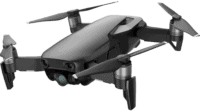 | DJI Mavic Air | Amazon | |
 | DJI Mavic Air 2 | Amazon | |
 | DJI Mini 2 | Amazon | B&H |
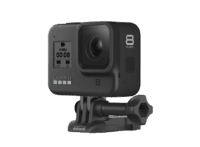 | GoPro Hero 8 Black | Amazon | |
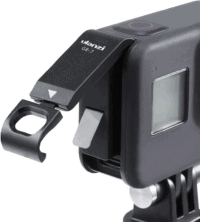 | GoPro Hero 8 Black Charging Port (Ulanzi G8-7) | Amazon | |
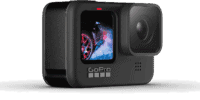 | GoPro Hero 9 Black | Amazon | |
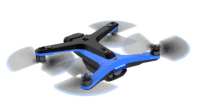 | Skydio 2 |
Don’t Forget the Product Comparison Tool:
Ok, lots of recommendations. If there’s a category I’ve missed (entirely plausible) – just drop a note in the comments and I’ll try and come up with a recommendation and add it above.
More importantly though, you can mix and match just about everything I’ve talked about above, with in-depth comparison tables over at the product comparison calculator, which today supports: Action Cameras, Drones, Heart Rate Straps, Watches/Bike Computers, Power Meters, Activity Monitors, and Trainers.
Select product use/budget for a comparison from the drop down menus:
Note: While many running watches have a basic bike mode, only running units that are multi-sport focused are also included in the bike-only results (in addition to bike-specific units). Hiking units are those that include a Barometric Altimeter, Magnetic Compass and navigational functions.
Or select products for comparison by clicking the product boxes below:
—
As always, thanks for reading – and supporting the site!

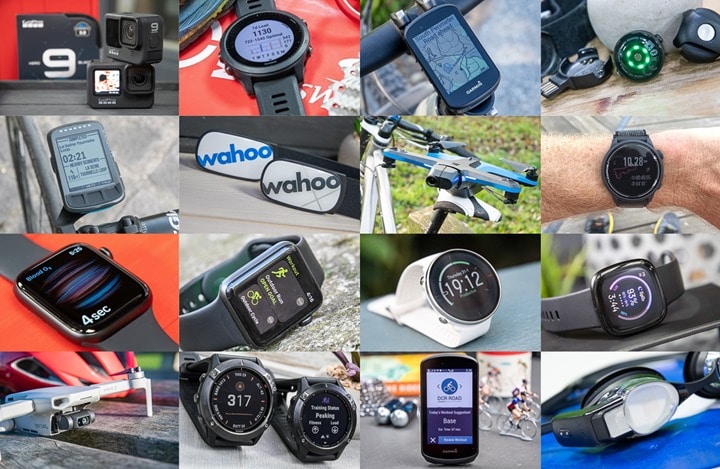
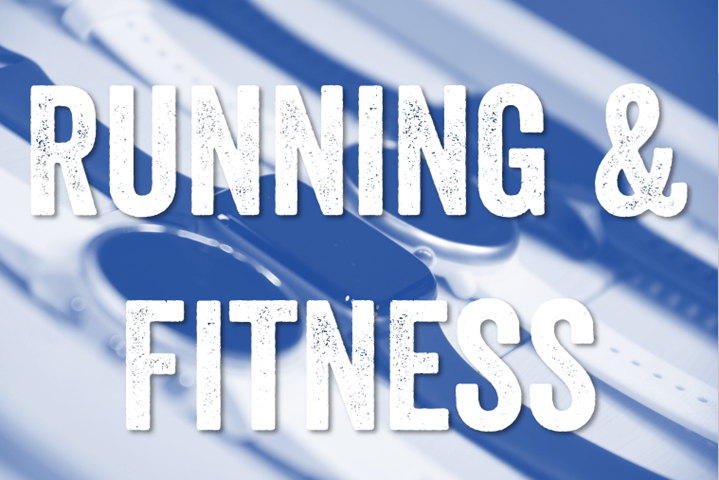
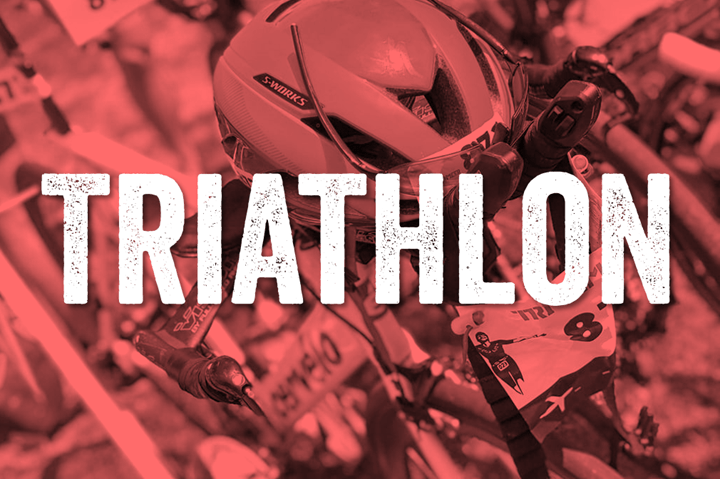
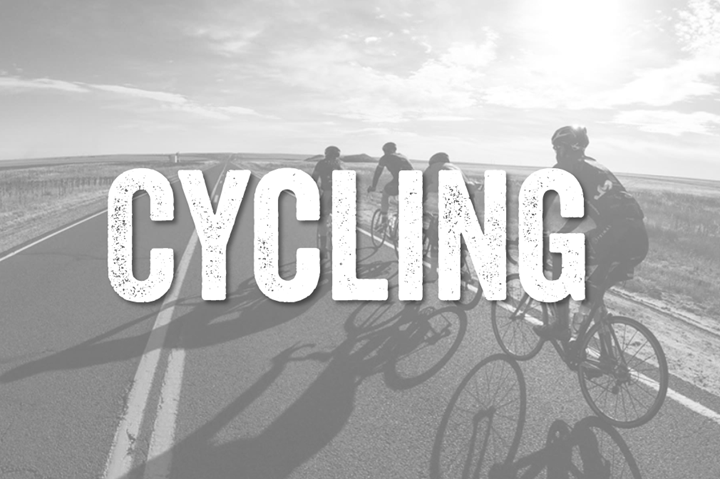

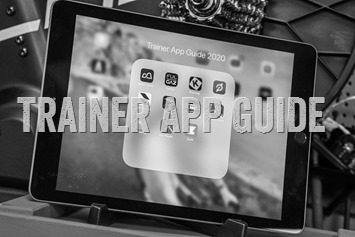
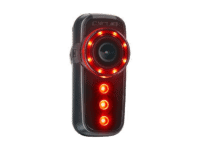
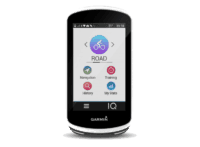
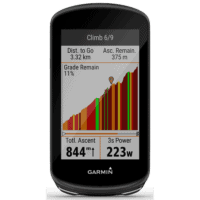
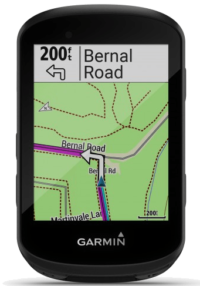
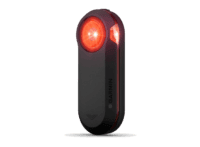
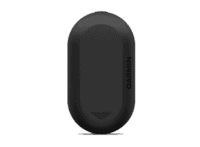
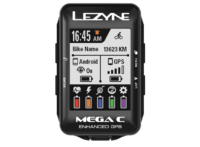
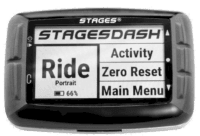
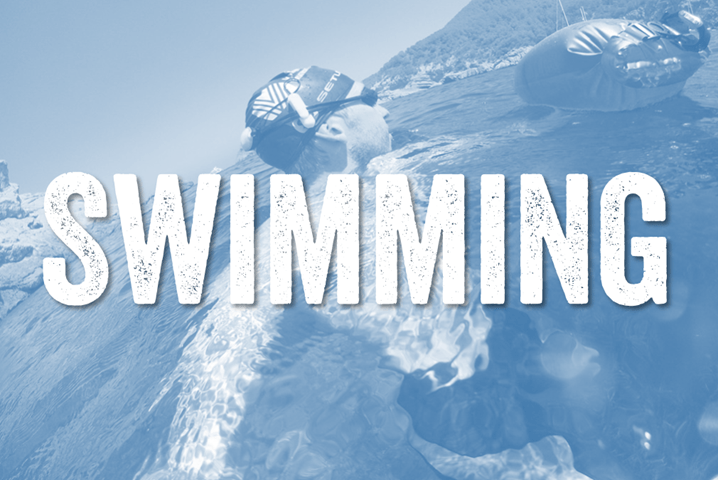
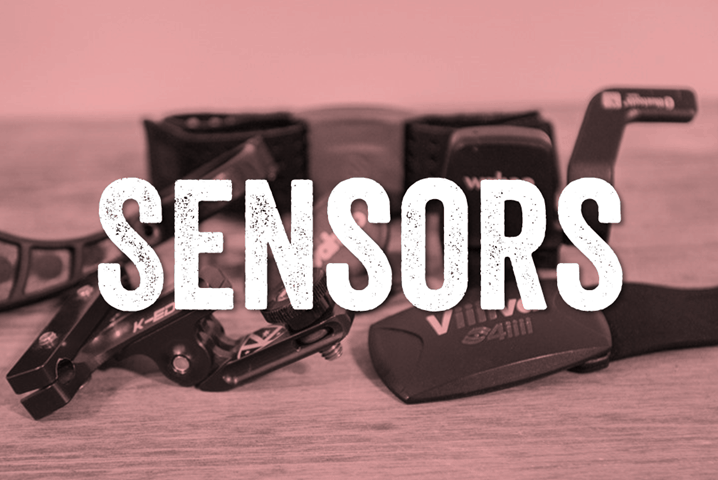
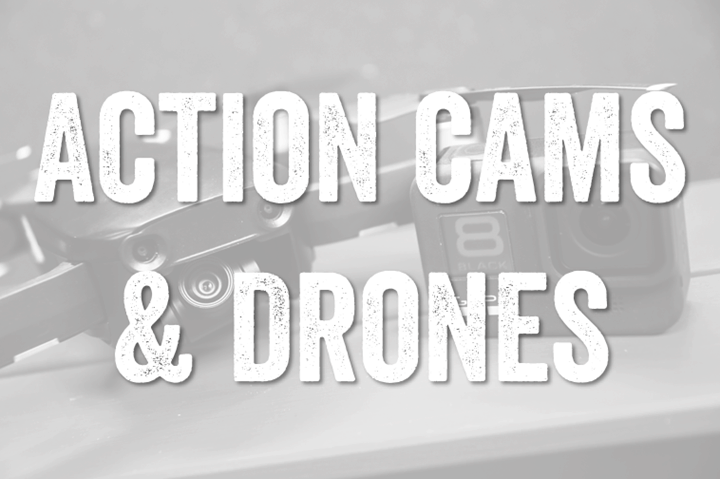
















“ One of these years I might even publish it more than once per year.”
I wouldn’t do that, if I where you. It’s already not that different than last years overview.
(But if it it a good vehicle for you to sell some adds and make some money, sure, go ahead)
It’s funny, I actually used to a number of years ago. I’d do one in November and another in June, typically after the sweep of April/May watch/bike computer announcements.
I think the last time I did that was 2014? link to dcrainmaker.com
A long time ago. Realistically my title for this post is poor for search ranking purposes (if I was aiming to do that, I’d split them out into ‘Best Fitness Watch 2020’ or ‘Best Bike Computer 2020’, or whatever. Maybe some day.
I do though thing there’s probably more validity in doing deeper dives or shootouts between a couple of products. For example: The Smart Bike Shootout I did (link to dcrainmaker.com) – or the Wahoo Bolt vs Edge 520 post a few years back: link to dcrainmaker.com
Those allow me to go super deep on a very specific product and flush out all the nuances.
I could imagine a run/bike/triathlon gadget overview in spring and indoor stuff in autumn would make sense. (But who’s spring and autumn?)
Never the less, I enjoyed the read! Keep up the good work.
And what about Polar Vantage V2?
Cheers,
Paulo
Hello. What would be your go to devices to maximally help an athlete in recovering and preventing overreaching and overtraining? I’d like a sports watch to track the occasional bicycling / gym and to track sleep quality / energy levels. I do not need all the fancy music, map or phone call features. But do you have an opinion if a proper HR belt measured HRV test taken daily would be the best for tracking recovery? For example using HRV4Ttaining or Kubio HRV every morning and simultaneously using a Venu 2 / Fenix 6 to track sleep and training.
Weight Scales?
Please. My spouse really wants one that does not require a sound inducing tap(s) to wake the scale (and her) first thing in the morning.
I used to have a weight scales section. Interesting, the guidance basically came down to: Buy whatever scale your watches are on. Else, buy a Withings Scale.
The reasoning is simple: None of the scales really work cross-platform all that well, save Withings. Except, in Withings case, it doesn’t tend to push weight into the platforms of companies that have scales of their own. Meaning, Withings can’t reliably push data into Garmin’s ecosystem, or Polar’s.
smartscalesync.com can reliably push weight from Withings to Garmin and Strava. I’ve been using them for a while now, and it works great. It’s more reliable than the old MyFitnessPal path.
Probably a bit of a niche market for you, but I would love to see the inclusion of best watches for navigating (thus, trail running or hiking). So that I’m not getting lost in the woods ;)
I second that. Navigation is one of the more important features for me (and the reason I don’t buy a polar)
I could be convinced to put back the hiking section. ;)
It used to be that so-called hiking/outdoors watches were unique in all their features, but these days almost every watch has a barometric altimeter (except for the motley crew of the Forerunner 45/245, and Vantage M, a few Suunto mid-range ones). And of course that’s funny, because cheaper watches from Garmin do have a baro altimeter when they want to compete with Fitbit on stairs.
In any case, I think the main features in this realm would be baro altimeter, navigation, compass, and in some cases battery life. Of course, even battery life is funny. A few years ago, that conversation was around ‘Need to get to 20 hours’ or something. These days, battery life in ultra/etc type modes are 3-5x that, such that I wonder how much battery life limits are really a real-world issue save for all but the most specific of edge cases.
Meaning, COROS has some crazy battery life numbers at the top-end. Unreal numbers. But, as I’ve said before, aside from literally a handful of athletes, I’m not sure if that battery trade-off on other things is worth it. Don’t get me wrong, it’s super cool that they somehow manage to pull it off, but it’s kinda like having 28% grade on a trainer. To what end?
Anyway…getting distracted.
Distracted, really? ;)
In the Netherlands I see growing interest in trail running, which is quite funny due to its pancake-shaped-flatness. Also, I’m hearing often discussing regarding navigation on watches. I’m using the Suunto spartan sport. It is ok for most routes, but not when the road gives you more than 3 options or when there are ‘odd’ (non-linear) paths one can follow.
But of course, baro, alti and battery is also of importance:)
Having done a trail run in the NL a few years ago (at night, in the snow, in the “wilderness” of Outdoor Valley Rotterdam), there is definitely big interest in Trail running over on the flatland…. that being said, I never really managed to get lost when out training, and the one time I did, my OVkaart got me back on track (bus driver was surprised though).
These days, having moved to the PNW, I certainly appreciate mapping and directions a little more, where a wrong turn easily takes you out of phone reception, to certain death at the hands of a bear/getting coal-rolled by a friendly local who disapproves of your bike-lycra….
Sorry to say Ray, but you don’t understand batterylife ;)
First, don’t look at maximum batterylife. Yeh, 40+hours with gps sounds impressive and virtually no one needs that. But that’s when the device is fully charged.
Look at the change the battery has, say 2 hours life left for a work out. A watch with max 20 hours batterylife has a 10% change it is not charged enough. A watch with max 10 hours battery life has a 20% change you first has to charge before your work-out.
Second, there is batterydegeneration. My almost 4 your old forerunner 935 used to do 20+ hours on gps. Now there is only 10 hours left. So I have to charge more often, and sometimes have to wait before I can go out for a run (that’s a real bummer)
Last, batterydegeneration is related to charge cycles. A watch with a large battery that needs a charge once a week has less chargecycles in a year than a watch you have to charge every 3 days. So a large battery will not only last longer during a gps workout, but also in years you can use your watch.
I guess these are not really your ‘problems’ because you have always some watch that is charged around, and you’re not wearing the same watch for yours, I guess.
And a bit ontopic on the navigation part: navigation is not hike only. I use it a lot during trailruns, but also in cities, even in my own city. I let strava/garmin/other opion generate a route for me for 20k and then just follow the line. Turn by turn alerts are apreciated. Barometer not so. Compass is handy
I’m currently on the lookout for a new/first fitnesstracker/smartwatch and I’m intrigued by this feature of an app generating a route for me.
Is this for specific products only or can Vivoactive/Venu smartwatches do this?
@hillgrove. A lot of things can generate routes. Both for a to b and loops.
Garmin connect can do it. You don’t even have to have a garmin device. The garmin connect app can generate a route, and the garmin connect website let youndownload a gpx which you can put on your device (except polar, they don’t support this)
Strava can generate routes for you. They have sync options with multiple brands.
Here in the Netherlands the cyclist interest group has a website which let you generate cycling oriented routes but they are also very useful for long distance running.
I expect there are many more options, but these are the 3 I use frequent. Strava is my favorite at the moment (although last summer it send me on trails where there was no path, but with a compass and the breadcrumb on your watch you will find your way)
Is it worth mentioning in the sensors section that Garmin Running Power requires a Garmin branded strap / pod to work? It’s obviously debatable how useful that actually is but it might matter to some.
Great review.
I’m considering replacing my Garmin F645 with a Fenix 6S Pro (F945 too big for my wrist), but I’m worried about buying another watch that does not get any feature updates going forward, especially when I expect the next generation of Garmin’s watches with use Connect IQ 4.0.
How big of a change do you expect CIQ 4.0 to make and will it be smarter to wait for the next generation to be released?
Great Question! I’m in the same position.
There’s rumour of a big Garmin release in Jan. I’d wait until then to make a more informed decision.
But generally it looks as if Garmin watches have a 2yr shelf life before major firmware updates are stopped.
Funny that both Edge 1030 and Edge 1030 Plus cost the same (before discounts) while 1030 Plus has slightly more features (though that “slightly more” probably means “daily workouts and global maps”). Or is there anything else that I would miss if I get 1030 instead of 1030 Plus?
Having upgraded from a 1030 to a 1030 Plus earlier this year the increased system performance (especially noticeable during route calculation and recalculation), increased battery life, increased internal storage and the absence of the annoying display issue (where the display develops some kind of blue halo at the edges) are some nice little touches.
Having used both devices for quite a few rides I’d say the 1030 Plus is really more of a nice to have upgrade. After all, I was disappointed how slow the route calculation still is – at least in crowded areas.
Thinking about Garmin’s strategy regarding updates I’d still go for the 1030 Plus as I expect it to get new features the standard 1030 most likely won’t see. All depending on the price and your budget of course.
I agree. I was riding the 1030 for a while and upgraded to the 1030 plus. I think it is a pretty big usability upgrade. The screen response time is better, the screen touch is better. The battery life is way better for my use case.
I would not hesitate to pick the 1030plus over the 1030 for even 100 $ more.
I totally agree about the product strategy – it’s always safer to buy a latest-hen device, especially with Garmin. I hope there will be a more substantial discount on it – the biggest I’ve seen so far was €50
In the watch-music segment: Garmin now also has an app called SubMusic to cache music from your own Subsonic/NextCloud/Ampache/Airsonic server. A niche product, to be sure, but if you’re very attached to your Subsonic server as I am, it could be very important to you.
I have no connection of any kind to SubMusic other than as a user.
I prefer the Wahoo TICKR FIt optical HR monitor over the Polar OH1. Sure, the Polar will store your data- but like how often do you run/cycle without your watch?
The Polar OH1 has a 12 hour battery life
the Wahoo TICKR Fit has a 30 hour battery life.
and that’s the difference.
I was surprised that there was no mention of the Tickr Fit. I have the OH1 as well and loved it for awhile but the battery life went down significantly over the course of about 6 months to where I couldn’t get more than a couple of runs out of a charge cycle.
Picked up the Fit and only have to charge it every couple of weeks.
The other use case for the Tickr FIT that could put it on the list is women…. my wife always struggled with strap placement with a bra, to the point where she often wouldn’t bother. I bought a FIT based on Ray’s tests to play with, but it quickly became hers (and I’ve kept using chest straps).
So my reluctance with the TICKR FIT is mostly around accuracy. It simply wasn’t as accurate as the others I’ve tested.
Perhaps I’ll circle back, now that we’re two years later, and see if anything has changed there.
I do agree, for many people the recording on-device isn’t really an issue.
I’m using the OH1 as my all-workout-hr-sensor. Love the very reliable data it delivers. AND: For running I use it with the goggle-clip attached to the inside of my pants. Works absolut perfect and I don’t have to wear any strap (neither arm nor chest)!
I’m in the market for a new power meter. Any chance you will be updating any of that anytime soon? Thanks!
Something a bit sneaky – if I click on the DJI Mini Amazon link I get redirected (correctly) to the amazon uk site. However it’s to a cheap knock off drone that is absolutely not a DJI model.
Grr…thanks for the heads up. Amazon had fixed that last week (Amazon has a bad SKU mapping on their side for both Mini 1 and Mini 2). Guess it’s broken again. I’ll do a forced override for Amazon UK on my side. Thanks!
Ok, overrides in. It’s funny though, the URL’s for those on Amazon UK are super crazy with weird keywords. I don’t understand at all. They’re definitely legit from the DJI store on Amazon UK (if I work backwards), but the Amazon UK URL has in it stuff like (not kidding): “Ayibagexi-Sashas-Fierce-Lemonade-Aluminum/”
So weird.
Any chance on a review of the Fierce Lemonade Aluminum? It’s my new favourite recovery drink….. ;)
Hi Ray,
Thank you for another great guide!
You mentioned the Polar H9 but not the H10? Why?
Regards
I’m asking myself the same as H10 has DUAL BT and ANT+ at the same time…
As noted, the H10 is great, however, it’s significantly more expensive ($89) than both the TICKR ($50) and HRM-DUAL ($59). Albeit, today it’s on sale for $72. But same basic point.
Looks like you’re missing the Skydio in the ACTION CAMS & DRONES: table.
Thanks!
Love this guide, but I’d pick the Magene S3+ Speed/Cadence Sensor over the Garmin/Wahoo ones. It’s half the price, available on Amazon, works reliably, supports both ANT+ and Bluetooth and does both Speed and Cadence off the same sensor.
Why not some cheap speed / cadence sensors from Aliexpress (etc..)? I’m not saying powermeter or trainer, but speed cadence sensor would cost half and will do their work well.
True, Magene S3+ does both speed and cadence and bluetooth and ant+ very reliably for half the price. It’s also available on Amazon.
Yup, I’ll order one and give it a whirl. Like you said, for the most part cadence/speed sensors are a dime a dozen in terms of base functionality. Though, we do oddly see some quirks on compatibility (reference Polar devices with some BLE sensors).
FR945 could be in the Cycling Tech section too, I know it is a Triathlon watch, but works perfectly as GPS cycling . It supports:
-Climb pro (with colored profiles)
-MTB features
-Maps and routing
-Dual ANT+/Bluetooth Smart HR (useful for zwift or TR)
– Smart Trainer Integration (it controls the trainer)
-Accident detection and event sharing
-Daily workout suggestions
-Calculates recovery time using sleep quality and stress (you cannot wear a cycling GPS 24×7)
My main sport is biking and the FR945 is my unique device, and I’m really happy with it.
Indeed.
Fun DCR Historical Tidbit: That line of thinking is actually the curious reason why bike computers are still labeled ‘watches’ in the comparison database, all these years later. I need to at least put a pretend filter on the front end so that people not familiar with the site know that they’re actually bike computers in there too.
Hi Ray,
Links to garmin 745 and 945 reviews are the same
Quirky database bug – nice find. Fixed!
Something you don’t mention in the HRM section… which ones you can swim with. I mean that regardless of whether you can get any data from your HRM to your watch (like if you have a Garmin watch and the HRM-TRI or HRM-PRO)… just “can it swim.” This is useful information for triathlons, because if you want to monitor heart rate it can be quite hard to put on a heart rate monitor in T1. I believe the HRM-SWIM (although not really suitable for wearing in a triathlon), HRM-TRI, HRM-PRO, and even the HRM-RUN from Garmin are waterproof enough to swim in. The Polar H9, H10, and OH1 are also suitable.
The HRM-Dual, the 4iiii Viiiiva, and the entire Wahoo TICKR line will probably be irreparably harmed by even a sprint distance swim leg.
Pretty much all the chest HR straps are IPX7, which means min 30 mins at 1 meter deep. Since most times people swimming are at about .3m or so, you can get away with longer.
It’s incredibly rare that I hear of triathletes killing HR straps in the water – like, usually years in between incidents.
1- I’ve killed one that was just IPX7, and one that was 1ATM; each time it was the first race I wore them for. While we don’t swim deep enough for raw water pressure to breach the seal, swimming through the water builds pressure in front of you – which can easily exceed the kind of pressure most HR straps are capable of resisting. You’ve touched on this in the past with watches, IPX7 simply doesn’t cut it for the kind of pressure put on your wrist at entry, but it’s also true (to a lesser extent) with HR straps.
2- Just look at Garmin’s recommendations for an example! Garmin rates the HRM-Dual to 1ATM, and does not recommend swimming with it; why would they bother to rate the HRM-SWIM (which is only intended for use in the pool, nothing deep) to 5ATM if 1ATM was enough? Similarly the HRM-PRO, TRI, and RUN are all rated to 5ATM… while the Wahoo TICKR line and the Viiiiva are IPX7.
Considering the Fenix 6, but wondering if there is a different recommendation if you weren’t concerned with the full suite of extra functions. Would Fenix 6/FR945 still be the choice if you were only interested in the basic triathlon training functional needs along with optical HR and decent battery life for use as a daily wear watch?
If you want just the basics then a 735 at £180 has you covered.
Love the webpage – looks like Garmin read your review and discontinued the Vivoactive 3 Music — and anyone who still has any left in stock have all raised the price as it is now $200 everywhere that still has it! Bummer but clearly they recognized they weren’t going to sell a lot of Vivoactive 4’s with the 3+music $100 cheaper and almost the same.
Real bummer. Especially since they still selling the older non music Vivoactive 3.
I wouldn’t call that deal dead yet. At this point, that’s unlikely to be Garmin pulling those strings, but rather Amazon. In this case, those products are long off MAP, and Amazon has long shown they like to toy with the VA3 price. Last year for BF it even dipped down to $99 for a few hours one day. And the VA3 Music wasn’t far behind.
We’ll see how the weekend plays out, but definitely stay tuned to my Twitter, as if I were to predict (with no insider knowledge) the most likely deal of the weekend, it’d be that and a $299 Edge 1030.
Garmin 935 at the Amazon Prime Day price of $235 was the best purchase I made this year.
Indeed, such a good deal.
And highlights the challenge of publishing something like this during the sale time of year. The FR935 at that price sorta shatters half the recommendations.
DC. My wife and I are in our 50’s. We go hiking on weekends. Several times we have gotten lost and had to call 911 because it got dark. We are looking for a Hike/Tracker that has GPS tracking, or a back track feature. That feature is very difficult to find in mid range priced device. No, triathlons, swimming, elite fitness monitoring. Just semi old couple weekend hikers. Thanks DC
Hi Ray, two things:
1. Are foot pods not a thing anymore? What use do they provide over (or in addition to) running watches.
2. I presume the Varia radar RTL510 is a reasonable (read: slightly cheaper) alternative to the RTL515 since it goes on sale more often, has almost the same battery life, and has one less light mode that’s only important when group riding at night.
Garmin pod offers running dynamics and power. Coros pod offers running dynamics (Power is native in the watch). Whether any of that is actionable data is debatable.
The major foot pod that offers actionable data is Stryd because it comes with it’s own eco system to support what to do with that power. It is still quite niche though. More popular with triathletes I think, since they more typically know bike power and are OK to spend £200 on technology such as this.
All in all pods are quite a small market today – maybe even “tomorrow”
I replaced my old Garmin cadence and speed sensors with the Magene sensors because I wanted Bluetooth. It was a less expensive alternative and I like that they do both cadence or speed.
The one thing that is a NEED: Garmin Varia RTL-515 Radar
Saved many lives already, and def saved mine.
Hey I wonder if you could help me with mine. Is there a way to adjust the range at which it triggers? It’s more of a Boom you’re dead warning than a useful heads up. I’ve only used it with IpBike.
I was still hoping that either Garmin or Polar would release a new activity tracker this year. I am wearing a classical Swiss watch on my right arm and don’t want to have another watch on my left. However I would love to track 24 HR data and have gps to track some running. What’s your view on this category? Is it dying or can we except some new models next year?
Same here! I used to wear a vivosmart 4 a couple of weeks on my other wrist. But the data were not fully synced to my F6S Pro and to be honest: The vs4 is a really ugly piece! Why isn’t there a reliable tracker with a nice design?
Yep, agreed. In fact, I wouldn’t even need a display and would be fine if I just use the app for all visualization. Don’t get why so little happend in that area last year… Let’s cross our fingers for 2021!
Great website
” I’d just read my full Whoop In-Depth Review to understand why I wouldn’t recommend it.”
Something wrong with the phrase, wouldn’t recommend it either. :-)
Ray, others,
Any chance Garmin (or cycliq, or someone) will ever let the Varia and the Fly6 make a radar sensing video taking baby? I would buy that instantly. Like, the day your review dropped…
I keep hoping for it…one would think this would have been easily in Garmin’s wheelhouse given their existing camera tech.
Do you feel the Wahoo Bolt is due for a refresh? I need one for next spring but feel bad spending full price for an old device
I do, but whether or not Wahoo focuses on that is different.
On the bright side, we rarely see Wahoo bike computer discounts, so…it’s not a decision I’d think you need to make today if you want it for next spring. Cheers!
Thank you great tool for comparison, can not see the new Polar V2, the cycling option I only see apple 3 why not the later model dear, Specially 6 edition. Thank you again for great tool.
Good catch – fixed for Vantage V2.
However, the Series 6 is in there, though, are you not seeing cycling?
What about the Samsung Galaxy Watch 3? I see it advertised everywhere but I haven’t been able to find a review on your site.
Indeed, still chugging to get that done.
However, in the meantime, I’d defer to DesFit who has finished his review on it: link to youtube.com
Thanks Ray, a very useful guide as always! :)
As I also commented on the previous version, where you wrote:
“you think the Fenix 6 should be here. But I don’t. Mainly because a heck of a lot of triathletes want something that has a quick-release kit, so they can move it to their handlebars.”
I’m not sure if I’m missing something, or that statement is just out of date, but I see Garmin’s “QuickFit® Quarter-turn Bike Mount” does support the full Fenix 6 line-up now – link to buy.garmin.com
Cheers.
So…it’s close, but actually not. In the ‘old days’ the Garmin Quick Release Mount was a single quarter-turn to go from wrist to bike. Within that, you had a dedicated wrist strip that also had a built-in quarter turn mount.
Whereas this one actually requires you remove the wrist straps on your watch in transition, then attach it to the new pod (and then to the bike, though, you could I guess attach the pod to the bike first). I suppose that’s fine, but it’s not really as smooth as it used to be or should be.
Oh, I see! I didn’t realise that the “QuickFit” adaptor lacks the ability to attach the band to mount a la the “Quick Release Kit” (which I see is still only compatible with FR 935 and 945). Thanks! :)
Any recommendations for running sensors? I have the Zwift but suffer from frequent signal drops. Is the Garmin the only other choice?
The other main footpod people go with is the Stryd, which is running a bit of a discount this weekend. It’s small, but it’s something (the discount). I’ve gotta get it added in.
I’m surprised you don’t mention Stryd in the article. I love mine, for the stability of pace when GPS signal gets sketchy which will happen in the woods. The power data is a bonus.
Ray. I know you haven’t reviewed the Descent MK2, but what are your thoughts? I didn’t pay attention to the MK1 and how quickly it stopped getting updates. Was it worse in terms of not getting the standard “Fenix” updates than an outdated Fenix (Fenix 5, for example)? I have a Fenix 5 that is fine but its about time to upgrade to either a newer Fenix or the Descent…
I am between Vantage M and F245. Which one do you propose? I mainly running, but I would like the watch that comes with the best virtual coach.
245 :)
HELP. DOES ANY WATCH ACTUALLY TRACK BASKETBALL? I.E steps/ distance?? Saw maybe SUUNTO? I had the UA healthband a few years ago when I worked for Under Armour and loved the little thing/ UA Record app (very pissed though I have an expensive scale basically useless now). Not until a couple of months ago did I try the Huwai band as it measured jumps/jump height etc obvi useful for basketball and so much more. HOWEVER it only did so for android and I am currently on iOS so I sold it and made a $5 profit. After much shopping around and product comparison and some sales I bought the Garmin vivoactive 3. Was told by garmin reps it tracks basketball… it does not. it also doesn’t have pulse oxi etc that vivo4s has so after a month of use I’ll maybe exchanging. I also run (if we wanna call it that) with UA bluetooth enabled shoes and have a smart scale. looking for tracker for basketball to use in conjunction with HALO and/ or WHOOP
It’s tricky.
By and large, most of the other brands don’t measure anything else in terms of jumps/etc. Definitely not Suunto/Polar/Garmin anyway. All of them will tally things like steps though.
Whoop is in the same boat in that it won’t detect jumps, but will detect the act of basketball as an activity.
For your shoes, those also broadcast as a Bluetooth footpod, and all of the above except Whoop can pair with that, which could be useful for tracking steps in cases where you’re not allowed to wear a watch on the court. The range should be just enough that if you left your watch on the side you’d be good.
Finally, for smart scales, it’s tricker. There are ways to get non-Garmin scale data into Garmin Connect, but it’s often a bit fiddly.
Thanks for the response! Yes I’m aware they don’t track jumps. Just terrible there’s no designated sport profile. I’ve found that all I can really do is track HR on garmin during activity and then hope steps are counted. It won’t give any distance as a run.
No running shoes for basketball (Dangerous) so no tracking in that way. Have thought about foot pod. All odd though with this tracking as the devices have the tech inside that would gyroscope, altimeter etc.
Any way thanks for the content ! I read it though I don’t run/ bike!
I think in the swim section, you might have a contradictory recommendation there. You recommend the Garmin Swim 2, as well as the Form Swim Goggles. The problem is that they are incompatible together. The Garmin does not have the ability to support the Form goggles. So, you might want to note that if you want the goggles, don’t get the Swim 2.
Good point. It wasn’t so much to buy everything on the list and put it together, but rather, items that swimmers might find useful. :)
I’ll make a note that the Swim 2 doesn’t support Connect IQ apps.
Hi,
Im interested in HRV tracking to assess how well my body is recovering on a day to day basis to help guide my training. Is there any particular watch/strap that you’d recommend that works the best?
Thanks
Paul
Whoop is big in recovery
Yes nice information #DCrainmaker,
I was purchased Forerunner 745 newly launched but its so difficult to use it and many feature in this watch was very hard and connectivity. but watch is really nice.
Ray – what’s you quick and simple suggestion for HRM: optical or chest strap?
Thanks
Do you think there’ll be a fenix 7 soon?
I currently have a non solar Instinct. I walk for exercise and plan on running too for exercise and am trying to lose weight. I wanted one of the forerunner Garmin’s that has the metrics and other features the Instinct doesn’t have. I would also like to have a barometric altimeter because I like to hike as well. I like the 945 and 745, but they’re out of my price range right now. Do you think the 245 would work for hiking even though it doesn’t have a baro altimeter? Is the 935 too old? I saw that they’re discounting those.
See my reply which seems to have jumped to the end below ⬇️
Do you have any reviews on long term robustness and reliability?
My Garmin 645 died just over a year old. A Garmin rep at an event told me “Yeah, they do that sometimes.” I replaced it with a 245 which had then just been released.
My HRM Run has just expired. Possibly due to water ingress but not sure. Again only 14 months old. Would a Wahoo TickrX last longer?
I can give you my experience. I had an Edge 705 that I used for 4 years, replacing it with an Edge 800 because the 800 had a temperature field. (The 705 still works, but because it doesn’t have the quarter turn mount, I’m unlikely to ever ride with it again.) The 800 lasted for 4 1/2 years before it developed a problem with the barometer, so I replaced it with an Edge 1000. That was superseded after 2 1/2 years by my Edge 830, because it had features the 1000 didn’t, and the 830 is on its second year of use. Of these four, 3 technically still work fine. As for watches, Fenix 1 still works, replaced by an Epix because of maps and navigation, replaced by a Fenix 5+ because unlike the Epix Garmin actually supports it and it does a better job of maps/navigation. As for sensors, I had one of several GSC-10’s fail, have two Garmin hard shell HR belts that still work (both are probably at least a decade old, one might have come with the 705), got the magnetless speed and cadence sensors for all of my bikes when they came out, and they’re still working fine. So you’ve been unfortunate. Every manufacturer will have defects in some of their devices. Of devices with built in non-replaceable batteries, I personally don’t expect more than a few years because the battery will deteriorate; I’ve found Garmin to be actually better in that regard.
Oh, and I should mention the Fenix 1 is a replacement of one that died from water ingress after about a year.
I have had a horrible time with the elevation gain my my fenix 6 pro. The elevation profile that it records is choppy and results in elevation gains that over 3x higher then when i compare it with my fenix 3hr. It is worst on bike rides. In the picture below the top was recorded with the fenix3, the bottom with the fenix6. I have been going back and forth with garmin but have nit found a solution that works yet. They have had me do a hard rest, and soak the watch in soapy water. Nothing has worked yet…
Why do people keep doing this? Posting a screen cap of your phone isn’t doing anyone any good. The rides are on Garmin Connect. Make them public if they’re not already and then post the links to the activities on Garmin Connect here. It’ll be easier on a computer, but you can actually do it from your phone if you need to. No one can see your elevation profile this way, so no one has any idea what you’re complaining about. (I could also answer my question, “is this Montgomery County, Ohio?” easily just by clicking through and looking at the map. I’ve ridden there, and the flatness seems about right.)
Hi Ray, in the product comparison tool the Garmin Vivosport is listed as a watch but isn’t it an activity tracker?
Yeah, that’s a tough spot in my comparison databases. Basically, activity trackers started off as non-GPS things, then they got GPS. Whereas watches started off as GPS things, and then activity trackers invaded.
Usually for GPS ones I try and also stick them in the Activity Tracker side. Looks like I never did that though I can add it over.
I have a 245, you still get height data from the maps online, so you get elevation gain/loss data on a hike. But you don’t get floors climbed.
Weird, this was a reply to an earlier comment, don’t know why it’s gone to the end
Love your reviews!
My Fenix 5 has the dreaded sticky button for the Start/Stop. I’ve tried their recommendation of soaking for 30 minutes in soapy water but that didn’t resolve anything. I’ve also tried reaching out to them for potential alternatives since I’ve had mine since 2017. Their only option is a refurbished unit for $150 (I think).
Figured it might be time to upgrade to a Fenix 6 but am hesitant in spending money when the 7 may/will come out the middle of 2021. Does anybody think that the 7 will have any hardware related feature set that would make me regret buying the 6 now?
Hi
I’m a middle-aged man who is a bit ‘afraid’ of technology.
I want to cycle to Auschwitz (Poland) next spring/summer. Am I right that the Wahoo BOLT would be a safer bet for me than any of the Garmin series?
I don’t necessarily need 120 options, but want a simple cycling GPS system that works for me…
Also, I sometimes cycle in Indonesia, and hope to start doing so in Uganda/Tanzania.
What would be the best option for those countries?
thx, Reinout
Hi Ray,
Thanks so much for all this incredible info. I recently bought a Venu (Saw it on a flash sale at Amazon $249), and am frustrated with the fact that it can broadcast HR, but can’t be read by my Wahoo Kickr or Zwift (through Apple TV, yea, I realize that only connects via Bluetooth). Any news on if the “Virtual Run” or “Virtual Bike” app will be released to Venu? I chatted with Garmin support but they weren’t that helpful. When will these companies realize that when they “don’t play nicely with others”, they lose customers? Also can’t upload a workout to Garmin Connect from the Kickr, so I have to export a .fit file and upload it manually. GRRRRR… I have until Jan 31 to return the Venu…
Sorry Ariadne – meant to reply back to this – since I got a reply back almost immediately from Garmin.
“We do not plan to bring that capability to VVA4/4S nor Venu.”
:(
Thank you so much. Not surprised, they are ridiculous, and this is likely going to be my last Garmin smartwatch.
Thankfully, you’ve made my life easy by letting me know about the Cable device. It’s allowed me to use bluetooth to broadcast to Zwift through my Apple TV. Works brilliantly. Such a simple product and solves such a big problem!
I saw no mention of Suunto 9 Baro – not even a do not buy ? would it be worth picking up at this point ? I have one it is in my sock drawer (saving the battery for the summer) using my old M430 for smaller winter runs – want to grab a watch for the wife .
You mention Google Music for Wear OS, it was shut down. It’s been (poorly) replaced by YouTube Music. Might want to amend that.
Good catch – thanks!
I am ASTONISHED that the Stages L10 made the recommendation list. While everything described in that in-depth review is accurate in a best-case scenario, I experienced near constant software and sync issues involving options, settings and features randomly disappearing, resetting themselves, or otherwise behaving in unexpected and unwanted ways across the web, mobile and desktop apps. Despite a background in IT and up-to-date devices, I simply could not get the system to consistently and accurately save settings, record a ride, sync to the various Stages apps and then to Strava. And that’s without touching on the PC hard drive thrashing, which had more of an actual performance hit than expected.
Curious why Bryton didn’t make the list, given that they exist to occupy this space and are similarly race-proven.
Honestly, aside from your report you just posted over on the review, I really haven’t heard any complaints about it. Not sure if that’s because people just aren’t buying it these days – or what, but pretty silent.
As for Bryton – it’s pretty rough software (having even tested it again in the last few weeks).
Appreciate the response. Perhaps my experience was an anomaly, or they were having server issues during the time of my use- and willing to bet the support department is hugely backlogged following booming spin bike sales, seems like a small company. I empathize, and am rooting for them in the long run, but won’t be using this particular device.
There’s a paucity of unsponsored information about the L10, I suspect because very few people are using it- at $150 might as well kick in a few extra bucks and jump to the mainstream, while $75 is closer to commuter/CatEye territory. Wish Strava would make device popularity statistics available, like Flickr did (does?) with cameras.
Strange days when cheap mobile apps plus a power bank can be so competitive with dedicated hardware. Hoping it’s an indicator that more innovation is on the horizon. Perhaps the Karoo series will be a bellwether.
“Wish Strava would make device popularity statistics available, like Flickr did (does?) with cameras.”
I agree.
I used to do so here with GPLAMA: link to dcrainmaker.com
And then…umm…someone got mad and threatened to zap our accounts.
Ray, any roundup of earbuds? I’m upgrading my iphone and I’m going to need some Bluetooth ‘buds to go with it.
Hope you can help me, it would be much appreciated. I am looking to buy a new watch, but my needs are slightly different. It’s time that my 5 years old, bulky Ambit3 Sport to retire.
I am quite serious about training and I have been doing it for more than a decade.
I need it for running. On the road. I’ll wear it only during exercise, without bringing my phone along. 1-2 hours a day.
I need to see the duration, pace and HR. I am not a data freak (anymore).
Display with big contrast during daylight and customizable screens, one big data field per screen as I have poor vision.
Wrist HR, I hate HR straps.
Industry standard strap is a must, nothing specialized.
WiFi is a must. I always had problems with Bluetooth and cables.
Buttons. The more the better.
Not bigger than a normal watch (40-45mm range).
No maps, no smart stuff, no touchscreen, no triathlon and other sports modes is needed, no music or 24/7 measurements either. So I prefer not to pay for these if possible.
I don’t care which brand, although Suunto left a bad taste with their constant software and mobile app issues.
Is the Garmin FR 645 my best bet? Is there another one that may fit my requirements?
dcrainmaker, does this watch exist? I couldn’t find it. Something like garmin 745, but WITHOUT optical sensor. For some reason, it just doesn’t suit my hand. I have fenix 5 now (had 735xt before), and while 5 is little bit lower profile, it still is in the way…
No, realistically you won’t see any mainstream watches without optical HR sensors. The market simply doesn’t exist at scale anymore for that type of device.
That said, you can at least disable them in most watches (especially Garmin) to save battery. It won’t save slimness, but honestly, the sensors are so slim these days it’s not making much (if any) impact on device thickness.
Yeah I’m aware I can disable. Thx for commenting!
What a great site! Your in-depth reviews are the best I’ve seen, and this comparison tool pulls it all together very well. I’m upgrading from a Fitbit Versa 2 to get on-watch GPS, and I’m now exercising considerably more. Using your comp tool and reviews, I’ve narrowed it down to Vivoactive 3 vs Ignite. Have you re-checked the Ignite since last year’s firmware update? To what extent does it overcome your qualms?
thanks!
What qualms? I think the main issue there was simply price, more than any specific software qualms for the most part.
?
?
You sounded quite irritated by the screen wake up, and you noted GPS inaccuracy. No? Sorry if I’ve misunderstood.
Ahh, sorry gotchya. No, I haven’t re-tested for those things – mostly because Polar basically admitted it was unlikely we’d see changes in GPS accuracy due to some of the trade-offs they made in the form factor. :-/
No worries, thanks for your response!
Hi Ray,
Long time listener, first time caller.
I’ve just had the HR module in my 4th Fitbit Ionic fail, and think I’m completely OVER the Fitbit experience, having used their gear since the Flex – everything seems to have failed within or just out of warranty.
I’m a bit of a gear nerd, so naturally attracted to the Fenix 6 series – obviously the Fenix is a signifant jump from the Fitbit Ionic, but in your experience, do Garmin have the long term reliability concerns as I’ve experienced (and others, based on my research) with Fitbit?
I very rarely hear of long-term type reliability issues with Garmin. Usually, if people have issues with a Garmin, it’s short-term bug fixes. Long term, some people might argue they are too well built…making it tough to convince their spouses and such that a new unit is needed because the thing won’t die. :)
Thanks Ray, appreciate your time to reply!
Hi! Thinking about upgrading from an old apple watch (gen 2) to a garmin since i’m realizing I dont really use the smartwatch features much (dont need texts, calls, phone notifications really).
Wondering if anyone has thoughts on the Fenix 5 plus with a sapphire screen (amazon $400ish) vs the vivoactive 4 (amazon $250ish)
I like the idea of the longer battery life and the look of the Fenix 5 plus but not sure if its worth the extra money. My main use cases are running, cycling (road and peloton), and interested in sleep tracking. Would love the fenix 6 to get the training suggestions but out of my price range. Assuming both could broadcast HR to my peloton during rides?
Appreciate any thoughts! Thank you!
HI Which watch would you recommend for indoor and outdoor rowing?
Hi Ray! As always, your website is my go-to before I buy anything sportstech-related. Thanks for the amazing work!
I’m looking to buy a watch for my triathlon training. As I live in the mountains, my runs are usually quite hilly. For swims there’s three scenarios: indoor pool, open water lake and in the river against the current (small river with some nice swim spots in the summer). For cycling I mainly use my Bolt with Tickr for HRM (which I would use most of the time when running or swimming).
Now, I’m looking at either the Coros Pace 2 or Polar Vantage M, with the Vantage M being slightly cheaper than the Pace 2 (due to shipping costs). Assuming both are within €20 in price. Which would you go with? (I assume you get similar questions all the time, so apologies for that).
I’m thinking the Pace 2 offers just a bit more (barometer, running power), but aside from that there’s really not much difference to me in terms of performance.
Am I right in assuming the two are pretty evenly matched and both would do the job? Which would be your pick?
Thanks!
I am in a real dilemma! I have read and watched a LOT of reviews on mid range watches.
I am replacing a TomTom Cardio which had been ok but a couple of points really drove me mad; GPS connect time and syncing time.
I will mostly be running with a couple of cross training sessions a week. I like the idea of music, but it may not be a dealbreaker as I only really do one long run a week.
Given the choice of Apple Watch series 4/5, Garmin Forerunner 245 Music, or Coros Pace 2 which would you pick?
Based on what I’ve gleaned from reviews, etc, the Garmin is the better unit.
I need to replace my wife’s Fitbit Charge HR, and leaning to the Garmin 245 or Venu SQ
If you like music, that kinda kicks out the COROS watches.
Then you probably want to think about which music service you use. For example, you can offline Spotify on Garmin, but not on Apple Watch (still, not yet). Inversely, you can’t put Apple Music on a Garmin Watch, but can on Apple.
Hi Ray.
Can you share any update on your Bryton 750 review?
Thanks for all your work.
Hi Ray! What do you think about using a Coros Pace 2 for cycling (on Garmin’s handlerbar watch mount).
Now I have a Bryton Rider 10 for cycling and my phone for running, hiking, paddleboarding etc… I bought a Polar OH1 (because I’d like to try hr based intervall training) and I realized my Bryton has totaly different hr zones that I’d like to use. I have a budget for only one device and a watch would be a better overall choice but my main focus is cycling. So What do you think? How good is the Pace 2 for cycling? Is the small display readable on a road bike?
I have recently broken my old TomTom Cardio watch.
The insurance company have selected a Garmin Venu SQ Music as a replacement. The vendor is a big box store and not a sports watch specialist so the option to change were limited.
I did look at the Huawei GT2 Pro for the same price due to an impressive list of sensors; but sharing data seemed difficult, you can’t customise workouts, and I couldn’t sync my Aftershockz.
I am planning on attempting a 80/20 training plan because as a recreational runner I think I have been pushing too hard. Therefore the ability to design and upload a workout (i.e. 5 mins warmup HR Zone 1, 20 mins HR Zone 2 etc) is essential.
I have been looking into running power and wonder if it will be useful to me.
This has meant I am doubting the Venu SQ’s use to me. The music option I can definitely do without as I normally have my phone with me anyway. I also note that without a barometer, I can’t use Running Power even with accessories.
I think that I can sell the Venu SQ second hand and buy a Coros Pace 2 cost neutral.
Would I be better off with a Coros Pace 2 or should I stick with the Garmin Venu SQ music?
thanks for the detailed but easy to read review. Comparison table very helpful and hard to find.
My question is about HR sensors. In an old post you made good points about accuracy and sampling.
link to dcrainmaker.com
There is a lot of scientific papers supporting the value of HRV data, but data is collected with chest bands or electrodes. Based on your conclusion that the sensors across wrist devices are comparable, the generalizability of the scientific findings (ie, what can i expect in real-life) would then be dependent on sampling. Yet i can’t find information on HR sampling.
Please consider adding this metric in your reviews.
Sorry if this is a frequent request (haven’t spotted it in the comments) – is there any chance of adding some filters to the product comparison tool for specific device features? There are too many to be exhaustive but I imagine there is a small set that many people are interested in (current models only?, baro?, route navigation?). I think it would really help when producing a shortlist for comparison.
Excellent guide! Good work! Please note that Apple Watch does not handle X-Country Skiing very well (does not show distance), just for those that think this is important :-)
What about a handheld GPS section?
I’d love to at some point, but ultimately I don’t have a ton of great long hiking options where I live (Amsterdam), amplified even more by COVID19. Maybe down the road though.
Hi Ray,
+1 for this – seems TwoNav have created a Garmin challenger with the Cross – and looks like it might even be a good bike head unit. Hope you get some hiking done when the world stops being on fire…
Ray,
fantastic article – but your entire website is awesome, I’ve recently discovered it and it’s amazing! Quick question, as I cant find help as it’s a “cross-type” inquiry: really want to buy a fitness tracker, and currently torn between FitBit charge 4, Garmin Venu SQ and Coros Pace 2. Budget is up to €250, and in terms of importance I’m looking for: 1. Health-related data (HRM + sleep data) 2. GPS 3. functionalities that can be used in the gym 4. anything else is a plus, but not a must (e.g. spotify, etc…). I do strenght-based training, intervals on a stationary bike, some running, swimming and cycling, as well as other sports, but none of the latter ones at a level of seriousness comparable to yours or triathletes… what would you suggest? I’m captivated by the Coros, but is that right? Would it be worth going over budget for the Coros Apex or not really? Thanks a lot, and keep up the incredible work!!!
I would get the Garmin Instinct or the Garmin Venu Sq
What about the vivoactive 4? Seems another good option in that range
I have a Garmin Edge 520 and experience frequent disconnections from my iPhone. I need to see texts for work, as I’m always on call, and often miss text notifications. Also, the 520 only shows the first part of the text, not the whole thing. I am in the market for a new bike computer that maintains a solid connection to the iPhone and will show entire texts. Some mapping would be nice. Thanks in advance.
Hi Ray,
May I suggest a revamp of your website? I am sure for a person reviewing software on a daily basis, you maybe already aware of this. The website is now too clunky and too clumsy to navigate. Certain brands are easily available on the homepage. Others are not. Even those who are don’t have all articles categorised. Further, for example, if I need a comparative tool I have to dig it from one of the buyer guides. It’s not very intuitive.
Then the adverts give the feeling of the 90s dot com era pop ups. It’s just too cluttered and all over the place. Sincerely, R
Dude may I suggest minding ya business?
Hey there! Incredible information you’re putting out here. I’ve been reading through so many reviews trying to find the right product. To keep things short, I am a tennis coach for a tennis team and I’m looking at tracking our athlete’s Active HR, RHR, HRV, etc, to have as much information as possible to reduce injuries and increase match readiness. We lost a match this year that we shouldn’t have partly because we had a couple very exhausted players. My question: What watch/sensor would be the most budget friendly and would allow us to track the heart readings mentioned above? Whoop would be perfect (because of how easy it is to understand and implement) but we can’t afford the subscription at the moment. After reading dozens of reviews, I am leaning towards Polar Unite but perhaps there’s a more budget friendly option like an only sensor alternative that could be implemented 24/7 and track sleep/RHR? Thanks in advance for any help!
Dear DC,
In Comparison its will be great to have a way to highlight the difference between the items. Also the physicals size of the Item i.e. watch thickness and weight it will be great, Great effort & great reviews. last when the full review of the Suunto Baro 9 Peak is coming lol.
Wow. All of your gear recommendations are on the spot. I bet that it took you a long time to test out different products and find what works the best. Im’ so gonna share this insanely good guide on my Pinterest and Twitter.
Please keep up the good work
The wireless headset link appears to be dead. You don’t mention the brand and model. Which are they? Thanks!
My favorites, Poly Backbeats have changed and I cannot find a pair that lasts more than a few months.
Sorry! Meant to post this here:
link to dcrainmaker.com
I have a Vivoactive 3 and the elevation is terrible. I think this is because the pressure hole is under the watch by the wrist. It gets sweat in it and then the elevation is all over the place. This seems to be a very common problem. I use the elevation correction in Strava, but it is truly annoying. For that reason alone, I would avoid the VA3.
I have this same issue and have replaced my vivoactive 3 three different times; after about 1 year of use the altitude is way off (often by a factor of 10). I’ve had times when I am sitting at my desk and my watch will alert me that I just hit a stairs goal (10 flights) and a few minutes later, while still sitting at my computer, I will get another alert that I got another stairs goal.
I came to the site today to see if there was a different recommendation. Garmin claims that the vivoactive 4 has the altitude sensor “holes” in a different place on the watch, but who knows if it is any better!?
Love your site!
You’ve missed one category: medical tech.
This week I underwent coronary angioplasty and coronary stent implantation. My Polar M430 now seems inadequate.
First, I want something that I can wear all day long, without skin irritation – my Polar causes my skin to itch after prolonged use. I need a metal bracelet.
Second, I want something that will give me a medical diagnosis. Something like Cardiogram (disclosure: not affiliated, haven’t used it, can’t recommend it, but it seems interesting).
Now, thanks to your review, I know that Apple Watch’s heart tracking is accurate.
So I’ll keep my M430 for outside walking, but I’ll use my apple watch throughout the day (and night).
Interesting how Garmin seems to show up on top for most comparisons.
Feature-wise I would agree. One thing that is being overlooked in this reviews a bit is the long term viability of the product.
I understand that this site is mostly about NEW gear, where my problem does not apply.
But what about sustainability?
I have a Fenix 3 HR that is still officially supported by Garmin Connect. I found and reported a condition that sends my Fenix into a reboot loop, and makes it dysfunctional when used with an iPhone.
Garmin refuses to work on the problem because the product is “so old”, and suggested a trade in that is more expensive than buying a new watch on the national market.
Crippling (intentionally or not) an otherwise supported product by software, and then refusing to support the customer is clearly the sign if too much market power. I would therefore suggest to think twice buying Garmin gear, as they are clearly not behind their product and customer
I have been using a Garmin Virb 360 on my sailboat to record racing, and generally I have been happy with it. It would take data from the instrument system and the Garmin software would let me overlay that data into the video, plus it is 360 so I can pan around to see the other boats. I also use a powered mount.
Well, I now have a new, not Garmin, instrument system, no the Virb is discontinued and the software has not been updated in forever. I’m considering replacing the Virb, with something that has supported software. But the powered mount and ability to overlay data is still important.
Can someone recommend a replacement that meets these requirements? I’m not clear if the GoPro Max can do these things.
Thanks!
Realistically, there’s not a lot of good options to replace what you want data-wise. Camera-wise, yes, the GoPro Max easily delivers there, but getting that data over the top of that footage is a long muti-step process that you’ll likely give up on.
I wish I had a better recommendation there.
Thanks Ray, I guess I’ll stick to the Virb.
is it possible you post this years buyers guide before black friday?
Great site, thank you
Looking for best watches for paddling – outrigger canoeing – pace, distance, map. Water resistant (does not need to be water repellent).
Trying to figure out the best Heart Rate Monitor to use because my Garmin Fenix 5 doesn’t broadcast bluetooth. (so yes, it works in the garmin world, but doesn’t talk to others nicely)
It seems like some of the HRM’s haven’t been updated here in a while.
My problems:
1. Wahoo Element computer/Garmin ‘double counting’ when uploading to Strava (really just want one entry, with heart rate)
2. Zwift displaying HR data from my iphone or laptop not currently possible (ant+). Stages Sc3 seems to read ANT but not forward signal here, so again I have double counting on Strava.
3. Swimming HR data.
I have (dead) Wahoo ticker X.
Contendors
Garmin HRM Pro because of the dual bluetooth broadcast.
Wahoo again, but my faith is a little shaky after last monitor died
Polar Verity Sense seems like an affordable option
Polar H10 seems like it was deprecated
Open to suggestions, but must broadcast bluetooth.
Am I wrong in thinking you used to have a…wizard for narrowing down what devices I’d want to pull up in the comparison? After my Forerunner 3 died I moved to a Suunto Ambit2 but stopped using it, mostly out of GPS and battery issues, but with actually getting a phone that can track my GPS, I also needed it less. I was horribly disappointed in Fitbit Charge2 but I have ideas of possibly looking into a device again…but am totally out of touch with most of these devices. I still wonder if what I’m looking for doesn’t actually exist. Oura3 might be it, but.. (autoimmune issue, recovery is a point of interest, but might still like to track calorie burn. I don’t want steps to arbitrarily be considered more important than fitness endeavors, particularly since a good portion of my workouts are ice hockey goalieing).
Wish there’s a product like whoop 4.0 for CrossFit
This website is fantastic. Thank you so much
Hi
Hope you’re doing well. I’ve been looking for a budget smartwatch with the best GPS accuracy for over two weeks and can’t choose 😞.
Could you please tell me which one will be perfect for mountain biking and running? Maybe Garmin Fenix 5 plus or Polar Vantage V from second hand? 🤔Or maybe Garmin Forerunner 245 music or 55?
Best regards!
Do people still buy running sensors? is that even what they are called? Footpods? This seems to be one of the only things Google cannot find…
I want something to run on Zwift. I use an apple watch (sucks for triathlon, but otherwise pretty great) so ideally it would integrate with that device (in whatever way that would happen).
In addition to Zwift, I really want the data. My Swim is fine and my bike is pretty competitive, but I really struggle with my running so I am legitimately interested in whatever data/analysis I can get my hands on to improve in that discipline.
Hello. What would be your go to devices to maximally help an athlete in recovering and preventing overreaching and overtraining? I’d like a sports watch to track the occasional bicycling / gym and to track sleep quality / energy levels. I do not need all the fancy music, map or phone call features. But do you have an opinion if a proper HR belt measured HRV test taken daily would be the best for tracking recovery? For example using HRV4Ttaining or Kubio HRV every morning and simultaneously using a Venu 2 / Fenix 6 to track sleep and training.
Looking forward to your review of the Garmin Edge Explorer and the 1040.
I need a health tracker without a watch to connect directly to Garmin directly.
I wear an automatic watch and so do not want to wear a smartwatch- I am happy with the Garmin connect metrics incl HRV.. I have used Whoop for two years but disliked having to use 2 apps
Is there a solution- A health tracking band that not a watch that connects to Grmin connect
I do not wish to wear a chest band 24/7
Hello,
Now since xx40 edge models and new forerunners are out, are your recommendations changing?
I’ve recently purchased a used 1030 plus after sifting through lots of scamming listings in German classifieds.
Thank you for what you do. Really appreciate it. 🙏
Any rumors that Garmin will release a cycling front light with camera? Seems like it would complete their light/radar/camera offering for cycling.